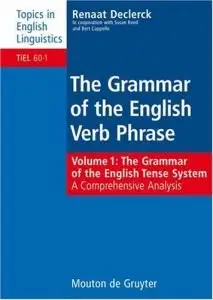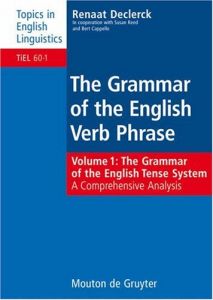Renaat Declerck, "Grammar of the English Verb Phrase: Volume 1: The Grammar of the English Tense System"
2006 | ISBN: 311018589X | 846 pages | PDF | 4,5 MB
2006 | ISBN: 311018589X | 846 pages | PDF | 4,5 MB
The Grammar of the English Tense System forms the first volume of a four-volume set, The Grammar of the English Verb Phrase. The other volumes, to appear over the next few years, will deal with mood and modality, aspect and voice.
The book aims to provide a grammar of tense which can be used both as an advanced reference grammar (for example by MA-level or postgraduate students of English or linguistics) and as a scientific study which can act as a basis for and stimulus to further research. It provides not only a wealth of data but also a unique framework for the study of the English tense system, which achieves great predictive and explanatory power on the basis of a limited number of relatively simple rules.
The framework provided allows for an analysis of the semantics of individual tenses which reflects the role of tenses not only in locating situations in time relative to speech time but also in relating situations in time relative to one another to form temporally coherent discourse. Attention is paid to the relations between tenses. On the one hand, we can identify sets of tenses linked to particular temporal areas such as the past or the future. These sets of tenses provide for the expression of a system of temporal relations in a stretch of discourse in which all the situations are located within the same temporal area. On the other hand, there are many contexts in which speakers might in theory choose between two or more tenses to locate a situation (e.g., when we choose between the past tense and the present perfect to locate a situation before speech time), and the book examines the difference that a choice of one or the other tense may make within a discourse context.
The book moves from a detailed exploration of the meaning and use of individual tenses to a thorough analysis of the way in which tenses can be seen to function together as sets, and finally to a detailed examination of tenses in, and tenses interacting with, temporal adverbials.
Original data is used frequently throughout the book to illustrate the theory discussed.



